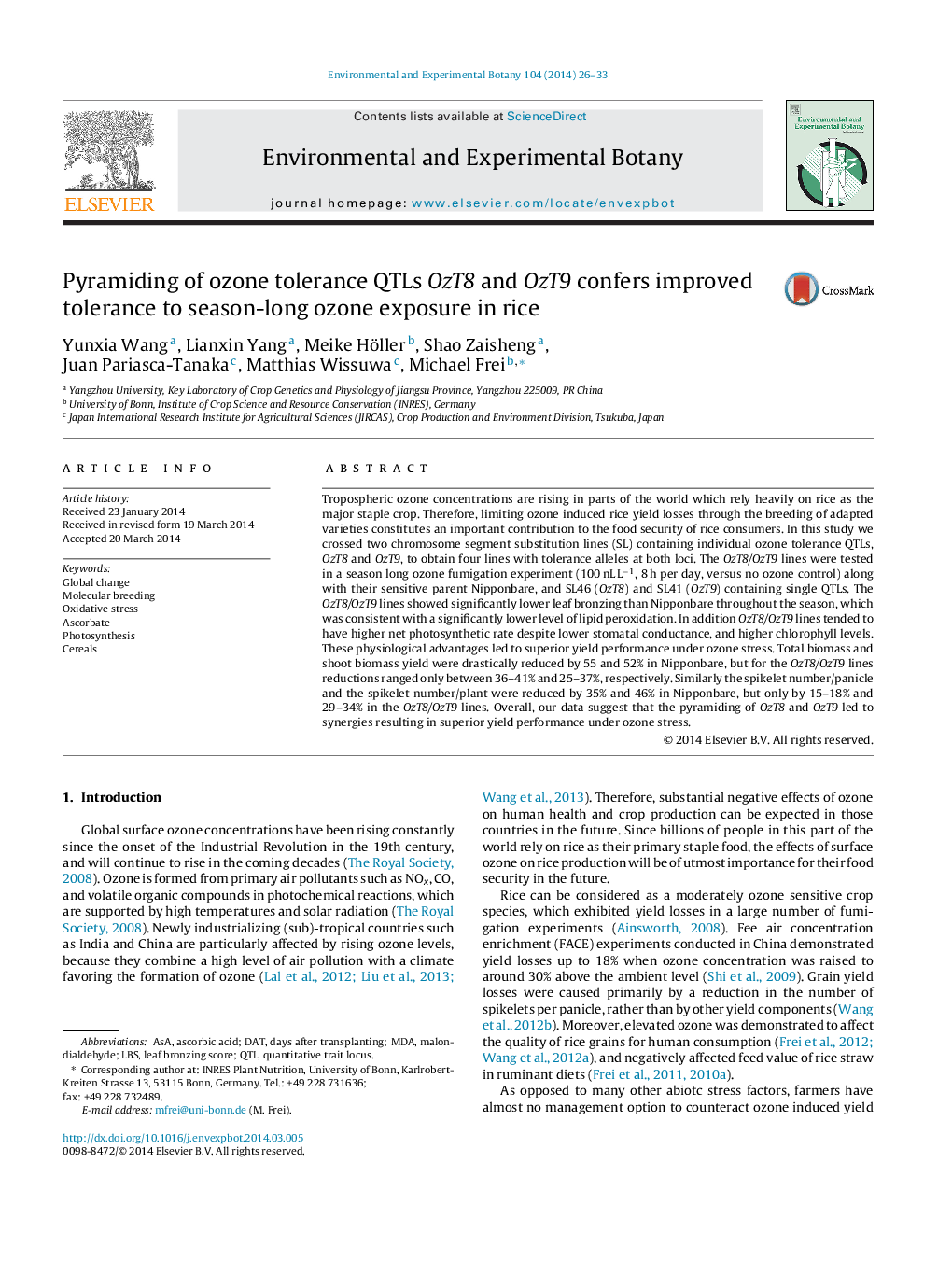| کد مقاله | کد نشریه | سال انتشار | مقاله انگلیسی | نسخه تمام متن |
|---|---|---|---|---|
| 4554425 | 1628073 | 2014 | 8 صفحه PDF | دانلود رایگان |

• Rice lines containing two ozone tolerance QTLs OzT8 and OzT9 were generated.
• Lines carrying QTLs were tested in a season-long ozone fumigation experiment.
• Lines carrying QTLs showed enhanced photosynthesis compared to their parent.
• Lines carrying QTLs showed enhanced oxidative stress tolerance.
• Lines carrying QTLs were superior to their parent in several yield components.
Tropospheric ozone concentrations are rising in parts of the world which rely heavily on rice as the major staple crop. Therefore, limiting ozone induced rice yield losses through the breeding of adapted varieties constitutes an important contribution to the food security of rice consumers. In this study we crossed two chromosome segment substitution lines (SL) containing individual ozone tolerance QTLs, OzT8 and OzT9, to obtain four lines with tolerance alleles at both loci. The OzT8/OzT9 lines were tested in a season long ozone fumigation experiment (100 nL L−1, 8 h per day, versus no ozone control) along with their sensitive parent Nipponbare, and SL46 (OzT8) and SL41 (OzT9) containing single QTLs. The OzT8/OzT9 lines showed significantly lower leaf bronzing than Nipponbare throughout the season, which was consistent with a significantly lower level of lipid peroxidation. In addition OzT8/OzT9 lines tended to have higher net photosynthetic rate despite lower stomatal conductance, and higher chlorophyll levels. These physiological advantages led to superior yield performance under ozone stress. Total biomass and shoot biomass yield were drastically reduced by 55 and 52% in Nipponbare, but for the OzT8/OzT9 lines reductions ranged only between 36–41% and 25–37%, respectively. Similarly the spikelet number/panicle and the spikelet number/plant were reduced by 35% and 46% in Nipponbare, but only by 15–18% and 29–34% in the OzT8/OzT9 lines. Overall, our data suggest that the pyramiding of OzT8 and OzT9 led to synergies resulting in superior yield performance under ozone stress.
Journal: Environmental and Experimental Botany - Volume 104, August 2014, Pages 26–33